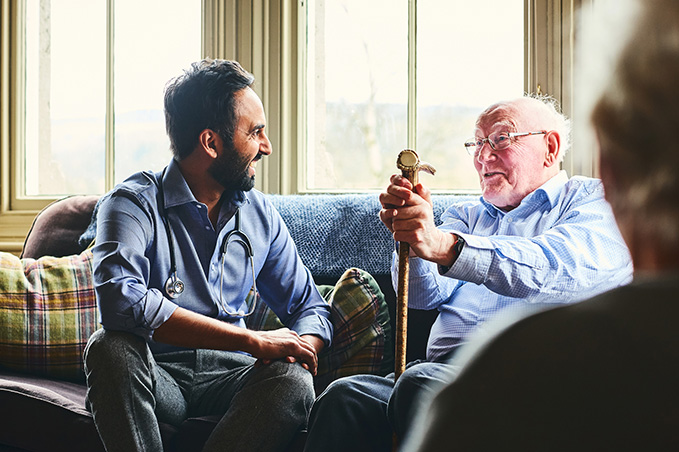Osteoporosis risks: Falls and fractures
 Osteoporosis is a silent disease, and by time someone realizes they had it, it can be difficult to treat or improve.
Osteoporosis is a silent disease, and by time someone realizes they had it, it can be difficult to treat or improve.
Falls and fractures are very common among frail older adults, and osteoporosis can turn these incidents into fatal accidents.
About 54 million people in the U.S. either have osteoporosis or have low bone mass, placing them at increased risk for osteoporosis.
What is osteoporosis?
Osteoporosis is a bone disease that causes bones to become porous, brittle and weak. Bones may easily break from a fall or even during everyday activities. Healthy bone looks like a dense sponge. As osteoporosis progresses, the holes and spaces become larger leaving only fragile structures.
Who is at risk for osteoporosis?
Men and women are at risk for osteoporosis, although the disease affect about half of women and about a quarter of men.
- People over 65 years of age
- Women who are going through or have gone through menopause, early menopause or surgical menopause
- Those with a family history of osteoporosis
- Those with a family history of fracture on their mother’s side of the family
- Personal history of bone fracture after age 45
- Caucasian and Asian women
- Small-boned women weighing less than 127 pounds.
- In men, hypogonadism or low testosterone
- Chronic and life-limiting illnesses can also exacerbate bone deterioration and worsen osteoporosis, including lupus, rheumatoid arthritis, celiac disease, breast cancer, prostate cancer, Parkinson’s disease, diabetes can all be contributing conditions.
- Some medications, including aluminum-containing antacids and steroids
- Calcium and/or vitamin D deficiency
- Low levels of regular exercise, especially weight-bearing exercise
- Alcohol abuse
- Cigarette smoking
What are the symptoms of osteoporosis?
A person with osteoporosis can’t feel bones weakening. They may not indicate that they have the disease until they break a bone. Other indicators are a loss of height or curvature of the upper back.
What are the health issues associated with osteoporosis?
Breaking a bone is a severe complication of osteoporosis because it is challenging for weakened bones to heal. In older patients, breaks are most likely to occur in the hip, spine or wrist, often as the result of a fall.
And about 20 percent of seniors who break a hip die within one year from complications from the fracture or repair surgery. Many patients require long periods of rehabilitation and extra help when they continue their recovery at home.
Osteoporosis can also limit mobility, which often leads to feelings of isolation or depression.
Anyone who sustains a bone fracture after the age of 50, ask your healthcare provider about a bone density test to detect and diagnose osteoporosis and begin treatment as quickly as possible.
How is osteoporosis treated?
Numerous prescription medications can help reduce the risk of fractures over time. For women, hormone therapy during and after menopause can help prevent worsening of the condition.
Home health care can help keep seniors with osteoporosis by working in the home to prevent falls, manage nutritional plans for healthier bones and make sure seniors are staying on track with their medication.
If you or a loved one is coping with osteoporosis or healing from a hip break or other fracture, Belvedere can help. For more information about our flexible, 24-hour scheduling and vetted caregivers, contact us at (518) 694-9400 Option 4 or info@belvedereservices.com.

